#Münchner Stadtmuseum
Explore tagged Tumblr posts
Text

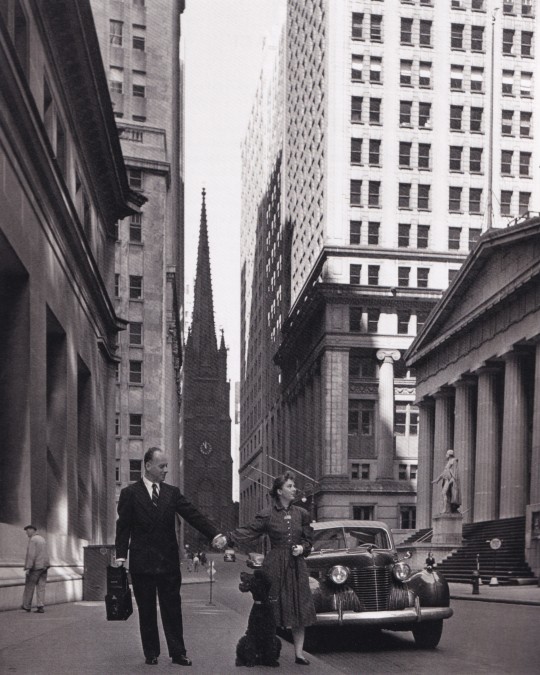
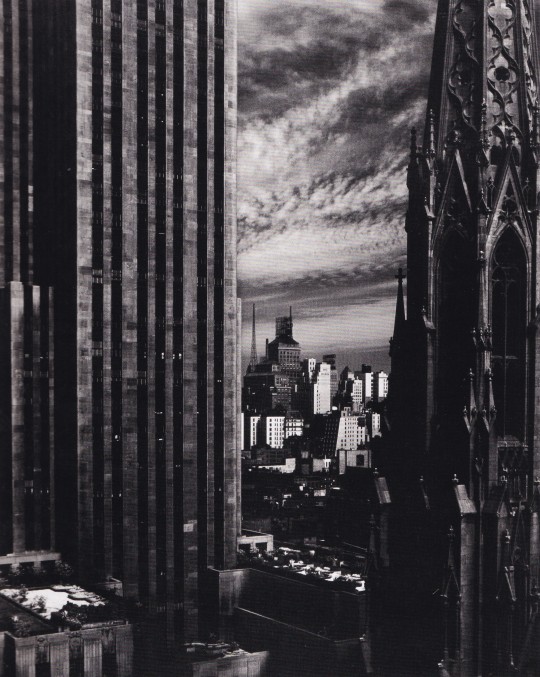

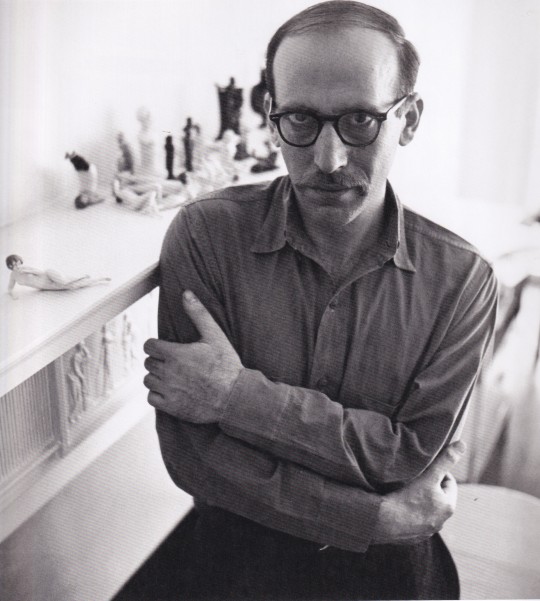

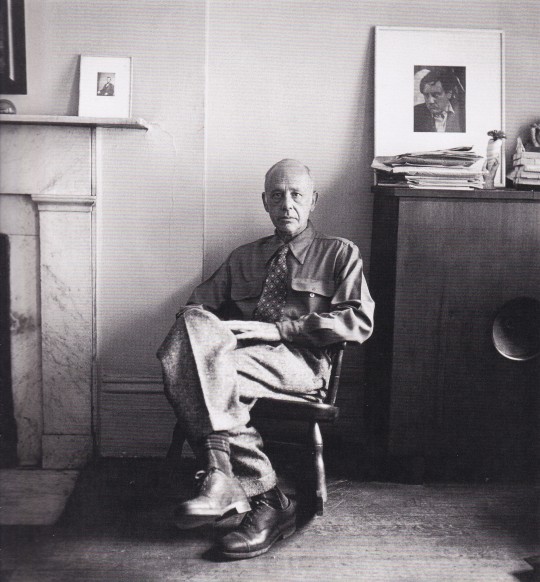


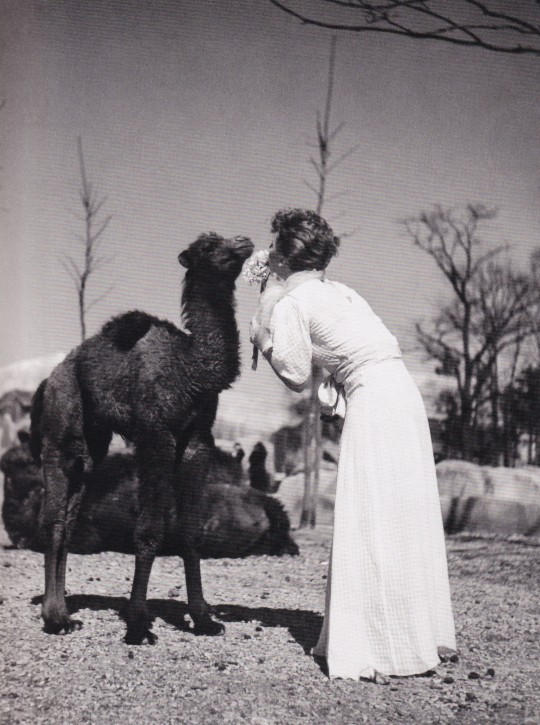
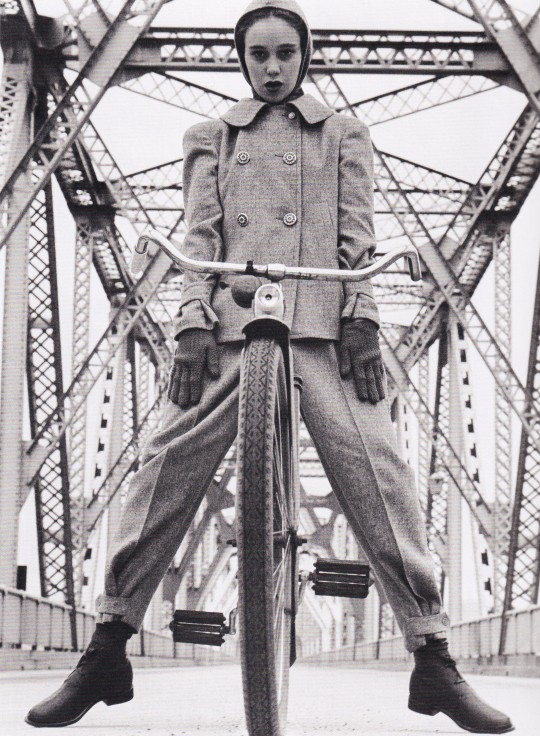
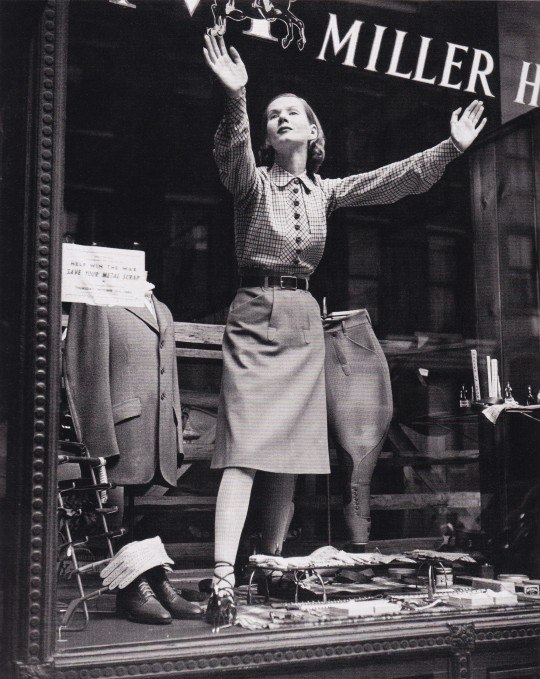
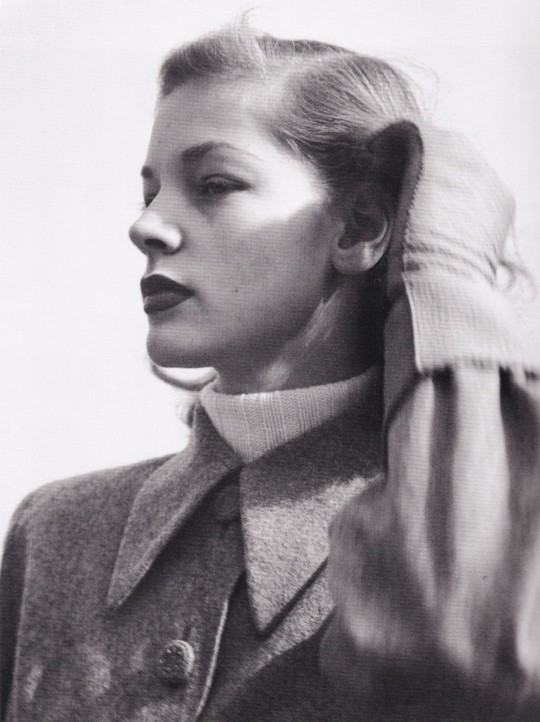

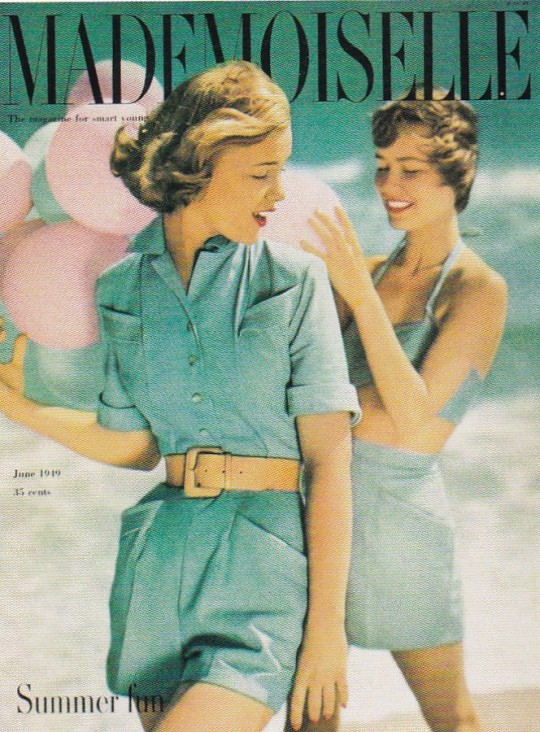
Hermann Landshoff – Portrait, Mode, Architektur
Retrospektive 1930–1970
Ulrich Pohlmann, Andreas Landshoff
Münchner Stadtmuseum/Schirmer Mosel, München 2013, 279 pages, 26,5x31,2cm, ISBN 978-3-8296-0652-3
euro 35,00
email if you want to buy [email protected]
In the spring of 2012, the Münchner Stadtmuseum’s Photography Collection acquired a sensational addition to its archives. The complete artistic estate of German-American photographer Hermann Landshoff (1905-1986), featuring 3,600 original prints from between 1927 to 1970, were generously donated to the museum.
Landshoff grew up in Munich-Solln as the son of a well-to-do Jewish family that was very much involved in the city’s art, literature and music scenes.
The catalogue will show a selection of Landshoff’s fascinating photographs for the first time, with subjects drawn from across the entire spectrum of his work, from fashion to portraits and architecture: early Albert Einstein portraits, New York fashion shots from the 1940s, artist’s portraits from the 50s and 60s, New York architecture, and travel photography.
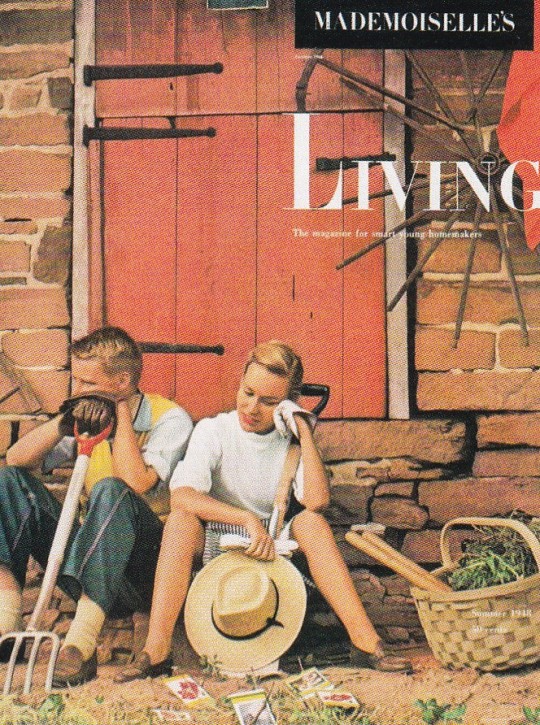

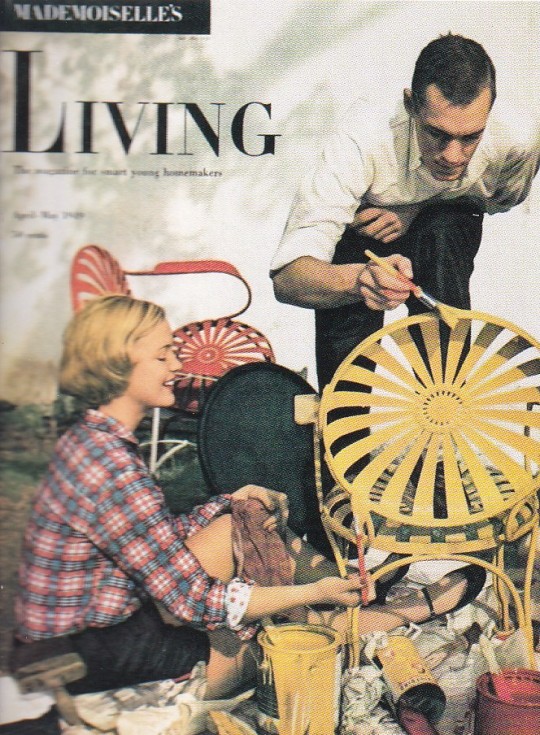

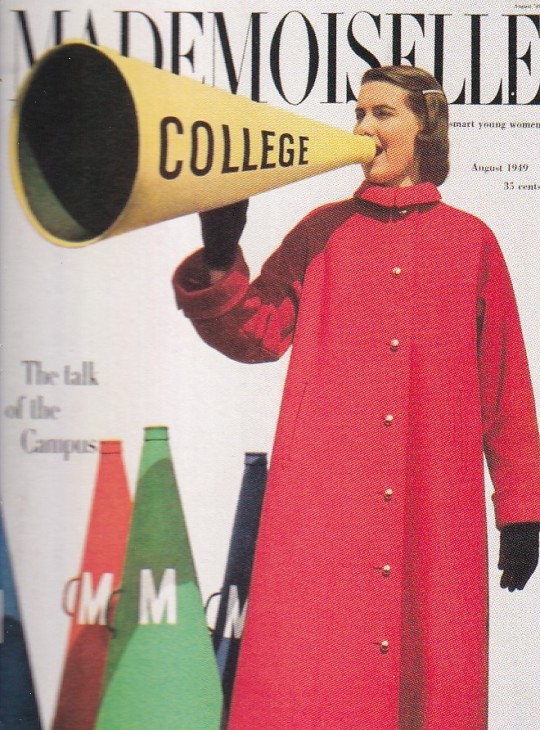


04/03/24
#Hermann Landshoff#Exhibition's publication#Münchner Stadtmuseum#fashion#portraits#architecture#celebrity photography#Max Ernst#Irving Penn#Lauren Bacall#Mademoiselle magazine#photography books#fashionbooksmilano
10 notes
·
View notes
Text

... untitled
© Toni Schneiders
31 notes
·
View notes
Text
The Historical Accuracy of Kirsten's Dirndl
Despite its adorableness, I have seen many people complain about Kirsten's Swedish Dirndl outfit.
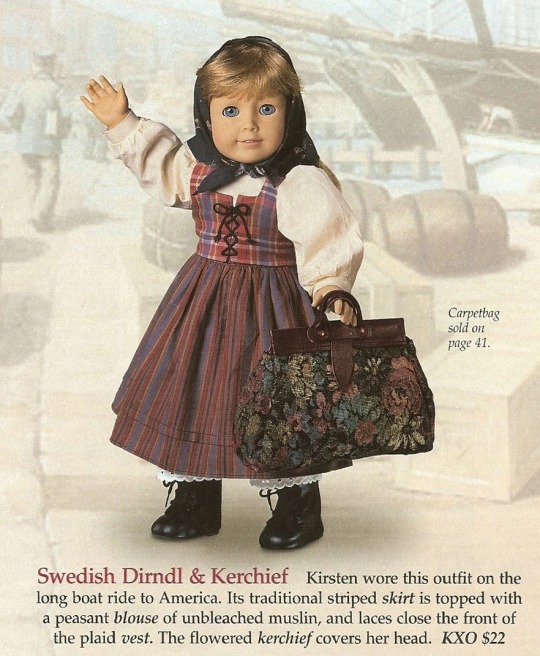
I would kill a man to have bought this for $22.
She wears this outfit for most of Meet Kirsten, being that she is an impoverished immigrant child who does not own any other clothes, and also for continuity reasons.
Frequently, I have seen it claimed that this outfit is not historically accurate and should not have been included as part of her collection. Conversely, I have also seen many German folk costumes marketed as being made for Kirsten. Both of these pain me a great deal (actually they just annoy me).
Nonetheless, I have decided to further procrastinate doing actual, meaningful work and instead set out on a new mission: figure out what the fuck is up with Kirsten's Dirndl.
In this post, I will lay out the research I have done, the evidence supporting the historical accuracy of this outfit, the challenges to its existence, and ultimately aim to answer the question of whether this outfit is one Kirsten plausibly could have worn on her journey from Sweden to America in 1854.
Let's begin.
First, the name. Pleasant Company/American Girl referred to this outfit as "Kirsten's Swedish Dirndl and Kerchief."
Unfortunately, there is no such thing as a Swedish dirndl. "Dirndl" is a German term, and refers to folk costumes worn by people in German-speaking areas of Europe (the Alps, Bavaria, Austria, and so on).
Kirsten is Swedish, and before Meet Kirsten has never left Sweden before. It is very unlikely she would have acquired, and regularly worn, a German dirndl. See this gorgeous example of a dirndl c. 1840:

Outfit, c. 1840. Munich, Bavaria, Germany. Münchner Stadtmuseum.
This ensemble is beautiful, but tragically, it is not what Kirsten is wearing.
What, then, is Kirsten wearing? What kind of traditional dress does Swedish culture have?
As it turns out, the proper term for what she is wearing is a folkdräkt. This is a Swedish term meaning "folk costume." Here is an illustration depicting multiple examples of Swedish folk costumes. In proper terms, these would be called "Svenska folkdräkter."

Nordisk familjebok (1908), vol. 8, Folkdräkt. Retrieved from runeberg.org.
These outfits are not quite identical to anything we see in Kirsten's collection, but you can observe various elements that have carried over -- the vertical stripes, black woolen skirts with ornate trim, and white dresses and red sashes (hello St. Lucia)!
Let us dive deeper. What do extant Svenska folkdräkter, specially those made c. 1850, look like? Is there anything like Kirsten's outfit among surviving examples?

Johan Sodermark, "Kvinna i dräkt."
In my few hours of research, this example image is the closest thing I have found to Kirsten's dirndl.
This lovely portrait is a watercolor from 1850 painted by Johan Sodermark. It is very creatively titled "Kvinna i dräkt" -- literally, "Woman in costume." The pattern of this woman's apron is incredibly similar to that of the skirt of the Kirsten doll's outfit -- a dark red base with blue and yellow stripes woven throughout.
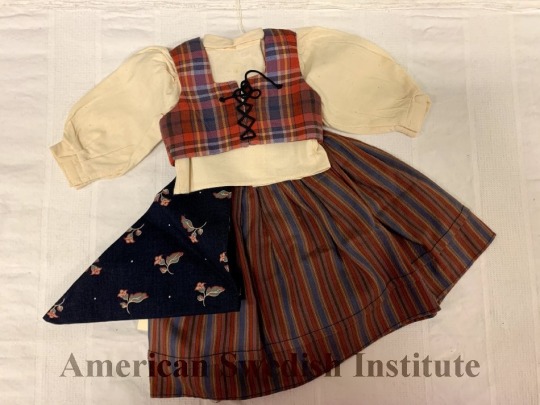
Here is a closeup from the American Swedish Institute.
Although it is not shown in the doll-sized version of the outfit, the illustrations in Meet Kirsten by Renée Graef show us she also wears a light-colored, striped apron, which is almost surely the one that comes with her meet outfit.
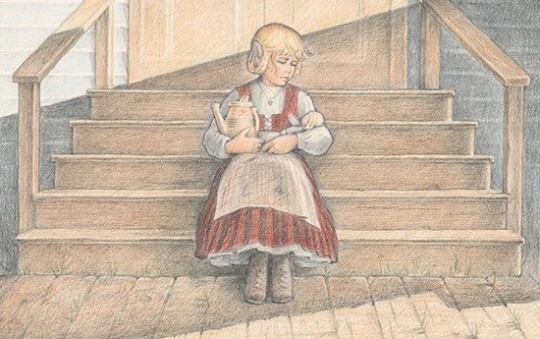
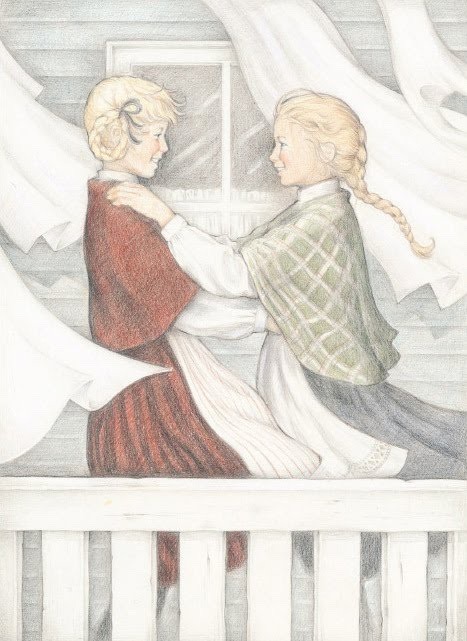

Illustrations from Meet Kirsten, drawn by Renée Graef.
Notice the fabric of the bodice in the third illustration, though: Kirsten's top is made of red plaid fabric, while Sodermark's girl has an outfit full of stripes. Kirsten, bless her heart, spends an entire book outfit-repeating a potential pattern-mixing fail: plaid and two kinds of stripes and a floral scarf. Did Pleasant Rowland just hate her? Is Kirsten on another, elevated fashion plane far beyond my comprehension? Is there a historical basis for this combination of patterns?
I have no answer to the first two questions, but thankfully can speak on the third.

Komplett Vilskedräkt, Västergötlands museum. Some pieces c. 1865.
The top is plaid and laces up, which is not necessarily the most common way of fastening (in most examples, the bodice pins up), but it is a sensible choice considering both Kirsten's age (9) and the fact that Pleasant Company was making toys for little hands.
The model for the outer shell (the lace up top) belonged to Karl Edberg from Hällestad; it is not dated, but at least one piece of this set (the bag, which is not shown) is c. 1865. Additionally, the blouse here is very similar to the one that comes with Kirsten's winter outfit -- look at that keyhole neckline!

So, Kirsten's Dirndl outfit is actually very accurate as far as the clothing itself goes...the name remains the trouble.
I have no idea why they called it a dirndl. Folkdräkt is definitely challenging to pronounce, but why wouldn't PC just translate it as "folk dress" or "Swedish outfit" and call it a day? Why the insistence on referencing a culture that isn't relevant to the doll or her dress at all?
Perhaps this is a mystery to tackle for another day...
#kirsten larson#kirsten#american girl#pleasant company#meet kirsten#american girl kirsten#american girl dolls#agig#ag doll#ag dolls#american girl history#historical characters#1854#rambles#kirsten 1854#historical clothing#historical fashion#american girl analysis#renee graef#swedish historical fashion#folk dress#pleasant rowland#ag tumblr#ag on tumblr#american girl doll tumblr
418 notes
·
View notes
Text

Käthe Kollwitz, 1906, photo: Philipp Kester, Kollwitz estate, Käthe Kollwitz Museum Cologne, archive, © Münchner Stadtmuseum, photography collection, Kester archive | 🇩🇪 Orginal: Käthe Kollwitz, 1906, Foto: Philipp Kester, Nachlass Kollwitz, Käthe Kollwitz Museum Köln, Archiv, © Münchner Stadtmuseum, Sammlung Fotografie, Archiv Kester
Käthe Kollwitz (born as Schmidt; 8 July 1867 – 22 April 1945)was a German artist who worked with painting, printmaking (including etching, lithography and woodcuts) and sculpture. Via Wikipedia
20 notes
·
View notes
Text

Karl Hubbuch (German, 1891-1979) Hilda Hubbuch (1905-1971) in the Haus der Rheinischen Heimat, Cologne, 1928. © Karl-Hubbuch-Stiftung, Freiburg / Photo © Münchner Stadtmuseum, Sammlung Fotograffie.
0 notes
Text
Sanierung des Münchner Stadtmuseums: Umzug, Umbau, große Pläne
München: „…Ein gigantisches Vorhaben: Das neue Münchner Stadtmuseum soll ein lebendiger, barrierefreier Treffpunkt im Zentrum der Landeshauptstadt werden. Dafür müssen drei Millionen Exponate umziehen, bevor aufwendig saniert werden kann – und das bis 2031. Das Münchner Stadtmuseum, das größte kommunale Museum in Deutschland, hat vor knapp zwei Wochen seine Tore geschlossen – und das für ganze…
View On WordPress
#Barrierefrei#Generalsanierung#Holzpalette#Kran#Millionen Euro#München#Museum#Sanierung#Stadtmuseum#Steinsäule#Umbau#Vorhaben
0 notes
Text
Stadtmuseum #München-letzte Nacht! Eintritt frei!
Samstag, 06.01.2024 18:00 Uhr Lange Nacht im Münchner Stadtmuseum! bis 1 Uhr Am Vorabend unseres letzten Öffnungstages bieten wir nochmal großes Programm. Wir laden bei freiem Eintritt und freier Teilnahme dazu ein, einen ganz besonderen Abend im Münchner Stadtmuseum zu erleben: Ob Konzerte, Führungen, Theater oder Zauberei – seien Sie dabei und lassen Sie sich mitreißen! Alle Dauer- und…
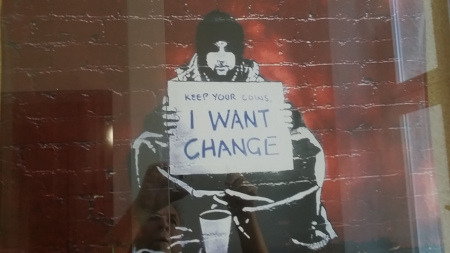
View On WordPress
0 notes
Text
Stadtmuseum #München-letzte Nacht! Eintritt frei!
Samstag, 06.01.2024 18:00 Uhr Lange Nacht im Münchner Stadtmuseum! bis 1 Uhr Am Vorabend unseres letzten Öffnungstages bieten wir nochmal großes Programm. Wir laden bei freiem Eintritt und freier Teilnahme dazu ein, einen ganz besonderen Abend im Münchner Stadtmuseum zu erleben: Ob Konzerte, Führungen, Theater oder Zauberei – seien Sie dabei und lassen Sie sich mitreißen! Alle Dauer- und…

View On WordPress
0 notes
Text
MUC / Schmuck-Perspektiven auf eine Münchner Privatsammlung: München bis 26.09.2021
MUC / Schmuck-Perspektiven auf eine Münchner Privatsammlung: München bis 26.09.2021
Die Goldschmiedekunst spielt in München seit Ende des 19. Jahrhunderts eine zunehmend bedeutende Rolle. Bis heute leben und arbeiten hier überdurchschnittlich viele Goldschmied*innen und Schmuckkünstler*innen. Die international bekannte Klasse für Schmuck und Gerät der Akademie der Bildenden Künste leistet dazu einen entscheidenden Beitrag. Das Münchner Stadtmuseum nimmt den Erwerb einer Sammlung…

View On WordPress
#Akademie der Bildenden Künste#Akademie der Bildenden Künste München#Gerät#Goldschmiede#Karen Pontoppidan#MUC#Sammlung Münchner Schmuck#Schmuck#Schmuckkünstler#Stadtmuseum München
0 notes
Photo

André Gelpke
Angelique, Salambo, St.Pauli/Hamburg
1976
Gelatin silver print 32.6 x 22cm André Gelpke and Münchner Stadtmuseum
186 notes
·
View notes
Photo

1967 Fashion photography by Rose von Rad
(Münchner Stadtmuseum)
66 notes
·
View notes
Text
Eva Hesse & Nelly Sachs
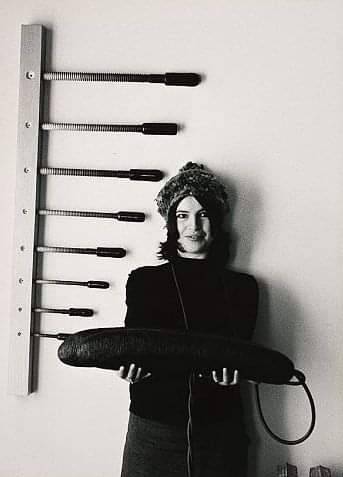
Bailarina…
Bailarina
nupcial
de la habitación de los ciegos
concibes tú
lejanos días de creación
ansiedad creciente-
.
Con tu cuerpo de calles de música
paces el aire
allí
donde el globo terráqueo
busca nueva entrada
hacia el nacimiento.
.
A través de lava nocturna
como párpados que se desatan
en silencio
parpadea el grito primerizo
de los volcanes de la creación.
En el ramaje de tus miembros
construyen las sospechas
sus gorjeantes nidos.
.
Como una que ordeña
en el crepúsculo
tiran las puntas de tus dedos
de las fuentes ocultas
de la luz
hasta que tú perforada
por el martirio de la tarde
entregas
la luna de tus ojos
a la vigilia.
.
Bailarina
puérpera que gira
tú sola
llevas oculto cordón umbilical
en tu cuerpo
legadas al Dios joyas gemelas
de muerte y nacimiento.
.
- Nelly Sachs. Versión de Javier Tubía
- Eva Hesse con su escultura Ingeminate en su estudio de Nueva York en 1969Foto: Hermann Landshoff; bpk Bildagentur, Münchner Stadtmuseum, Recurso de arte
9 notes
·
View notes
Photo
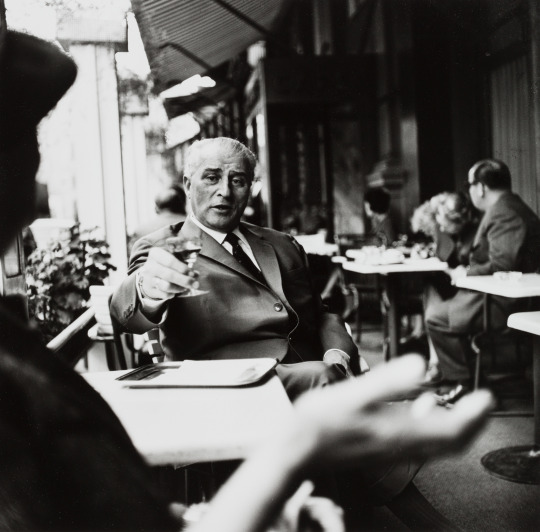
Carl Zuckmayer auf einer Café-Terrasse, vor 1962 © Münchner Stadtmuseum
3 notes
·
View notes
Photo

Female nude, ca.1925 by Franz Grainer pressure, 1925 München, Münchner Stadtmuseum
9 notes
·
View notes
Text

Carl Teufel (1845-1912)
Cloud Study, Bavaria, ca. 1890
Albumen print
Münchner Stadtmuseum
Since the late eighteenth century, many artists had painted cloud studies (études de nuages). These small-scale, open-air sketches served as preparation for larger landscape paintings executed in the studio. In the second half of the 19th century, photographs of clouds replaced these painted studies as memory aids. Many such photographs were sold in albums marketed specifically for painters.
2 notes
·
View notes
Photo

1834 Anna Pschorr by Joseph Hauber (Münchner Stadtmuseum - München, Bayern, Germany). From sammlungonline.muenchner-stadtmuseum.de/objekt/anna-pschorr-10002892.html?tx_mmslenbachhaus_displaymms%5Bcontroller%5D=Objekt&albumUid=25&backPid=10 1506. 1506X2000 @300 967kj.
#1834 fashion#1830s fashion#Romantic era fashion#Anna Pschorr#Joseph Hauber#cap#scoop neckline#lace-edged chemise#modesty piece#pleated bodice#Gigot sleeves#necklace#earrings#shawl
12 notes
·
View notes